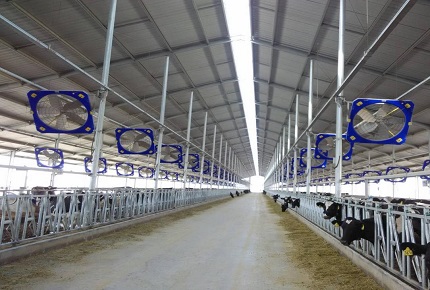Create Time: 03 ,12 ,2024
Cattle farming is filled with opportunities, from dairy and beef to selling calves for shows at local fairs. To start a new farm, you need a business plan, a plot of land, and start-up money. Build all of the features your farm needs, then start with a couple of cows. Turn those cows into profit and, over time, you may gradually turn your business into a thriving cattle farm.
1. Start with a small farm and a handful of cows at first.
Most farmers start off with 2 to 5 cows. They may not have the money or experience to handle more. Focus on getting a few healthy cows, then turning them into profit so you are able to afford more. Sell your products at a local level to get started.
Keeping only a few cows means your land won’t be overwhelmed. Cows take up a lot of space and may eat pastures to ruin if you aren’t careful.
If you have the money and experience, starting with a whole herd is possible, but be careful. Make sure you have barn and pasture space.
2. Choose beef ranching for a lower-maintenance cattle farm.
A beef farm is much more flexible than a dairy farm. Cattle ranchers sell cows once or twice a year, usually in the fall. They spend the rest of the time tending to their herd, ensuring that the cows grow strong and muscular.
The overhead cost to start up is comparatively low besides purchasing land. You may not be able to find good grasslands in some areas, while the beef market may be competitive in others.
3. Start a dairy farm for a more intensive but constant product.
Dairy farmers need to be very diligent to ensure their cows produce as much milk as possible. Dairy cows require a specific diet filled with nutrients, which makes them costlier to raise. They have to be fed and milked at the same time every day, but the result is that good cows produce milk year-round.
The startup costs are greater in dairy farming than in beef farming. Dairy farms need extra equipment, such as stanchions and milking machines. The cows require quality hay.
To get the cows to produce milk, you may wish to keep a bull around. Bulls are a little trickier to handle safely. If you don’t want bulls, use artificial insemination, then sell male calves for extra profit.
4. Raise calves for a unique farm that may fill a local need.
Calving farms are useful, but most farmers don’t recognize the opportunity to sell calves. It is somewhat similar to dairy farming, except without the need for milking equipment. You raise the calves either as veal or sell them to other people, from other farmers to show clubs like 4-H.
You need a separate calving bard and also have to consider keeping a bull or using artificial insemination.
Calves are quick to profit because you don’t need to wait for them to grow up. Don't sell all of your calves, though. Keep a few for your farm.
5. Aim on having plenty of pasture space for your cows to roam.
Each cow needs about 1 1⁄2 to 2 acres (0.61 to 0.81 ha) of pasture space per cow-calf pair. This amount of space provides enough roughage for a year. Most farmers are able to keep multiple cows on a single pasture if they’re careful.
If you leave too many cows in a pasture, they eat all of the grass. To prevent this, farmers rotate the cows to different fields. As long as you’re careful not to strain your resources, your fields will continue to produce roughage.
 English
English  中文
中文 






